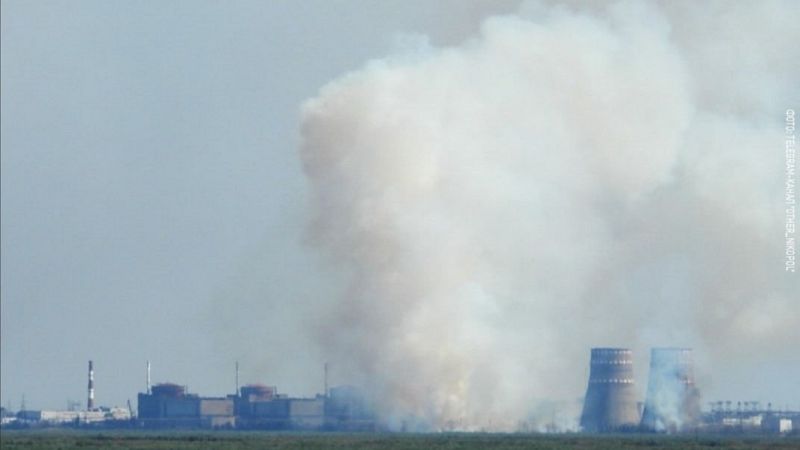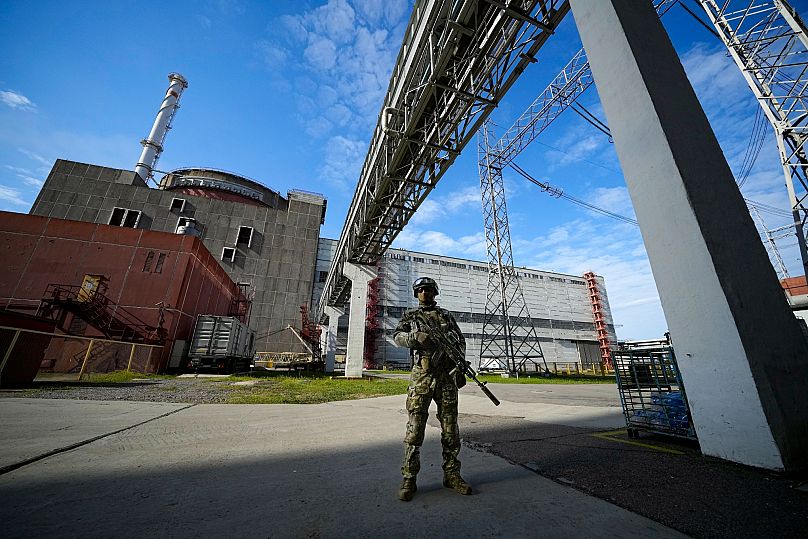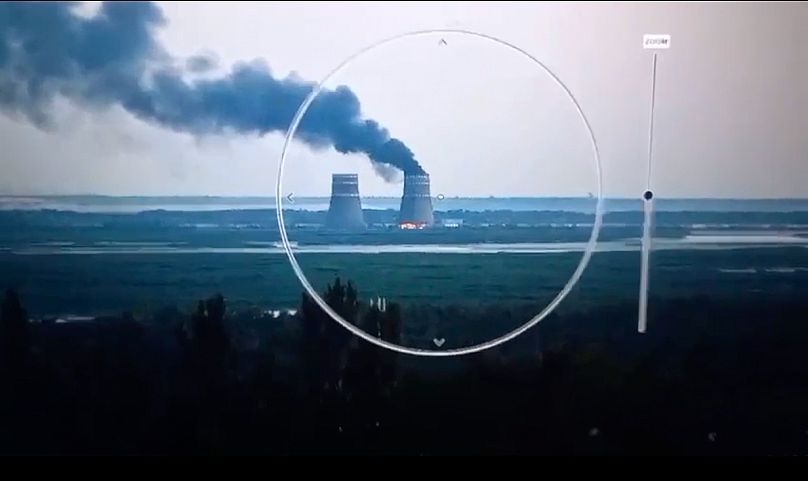Fire detected near Zaporizhzhia nuclear power plant in Ukraine, energy ministry says

Smoke has been detected near a cargo facility belonging to the Russian-occupied Zaporizhzhia nuclear power plant in southern Ukraine, the energy ministry said in a statement.
"The exact location of the fire and its possible consequences are currently being determined. We emphasise that the cargo port is located outside the protected perimeter of the station," the ministry said in a post on Telegram.
"This incident once again draws attention to the threats posed by the Russian occupation of the largest nuclear facility in Europe," the statement went on to say.
The Zaporizhzhia nuclear power plant, the largest such facility in Europe, has been a focus of concern for the International Atomic Energy Agency (IAEA) during the war in Ukraine amid fears of a potential nuclear catastrophe.
The plant has been held by Russia since the early days of the war following Moscow's full-scale invasion in February 2022, although it isn't producing power.
The city of Zaporizhzhia, about 440 kilometres southeast of the capital Kyiv, is held by Ukraine and attacks have occurred around the plant as the front line is close.
The IAEA rotates staff through the facility to check safety and offer its expertise.
Russia has suggested restarting the Zaporizhzhia plant in the past.
"We are going to be continuing our discussions with both, in particular with the Russians on this idea of (the) restart of the plant," Grossi told journalists in May.
"It is a matter that requires very careful consideration."
Zaporizhzhia's six reactors remain fuelled with uranium though they are in a so-called cold shutdown, meaning nuclear reactions have stopped.
However, the plant relies on external electricity to keep its reactor cool and power other safety systems. That external power has been cut multiple times in the war, forcing the plant to rely on on-site diesel generators.
Further complicating potentially turning the plant back on is the 2023 collapse of the Kakhova Dam on the Dnieper River.
The plant relied on water from the river for its reservoir, forcing workers there to dig wells.
"The plant lost its main source of cooling water, so the whole system cannot work as it was originally designed," Grossi said.
"The consumption of water is orders of magnitude higher (when the plant is operating) compared to cold shutdown. We don’t see any easy, quick fix for it."
The Zaporizhzhia plant has also been mentioned by US President Donald Trump as he has struggled to reach a ceasefire deal between Russia and Ukraine.
In a March phone call with Zelenskyy, Trump suggested the US could own and run Ukraine's nuclear power plants and protect them from Russian attacks.
Today



